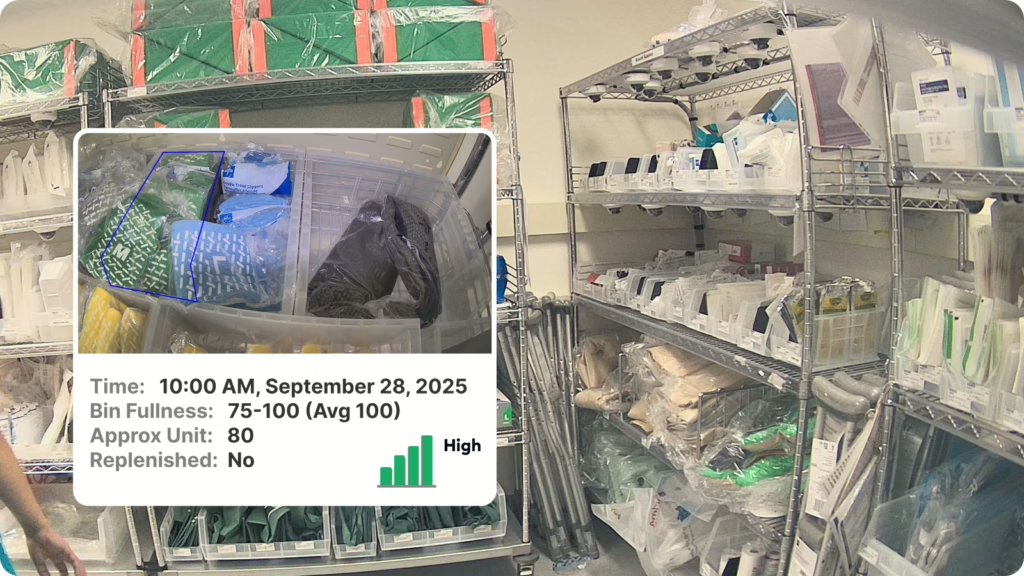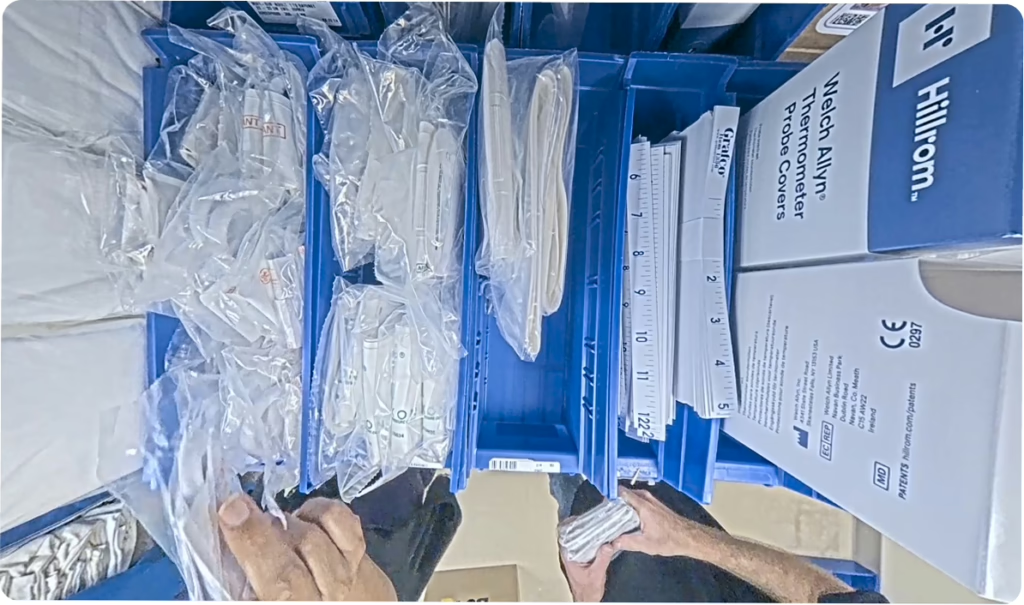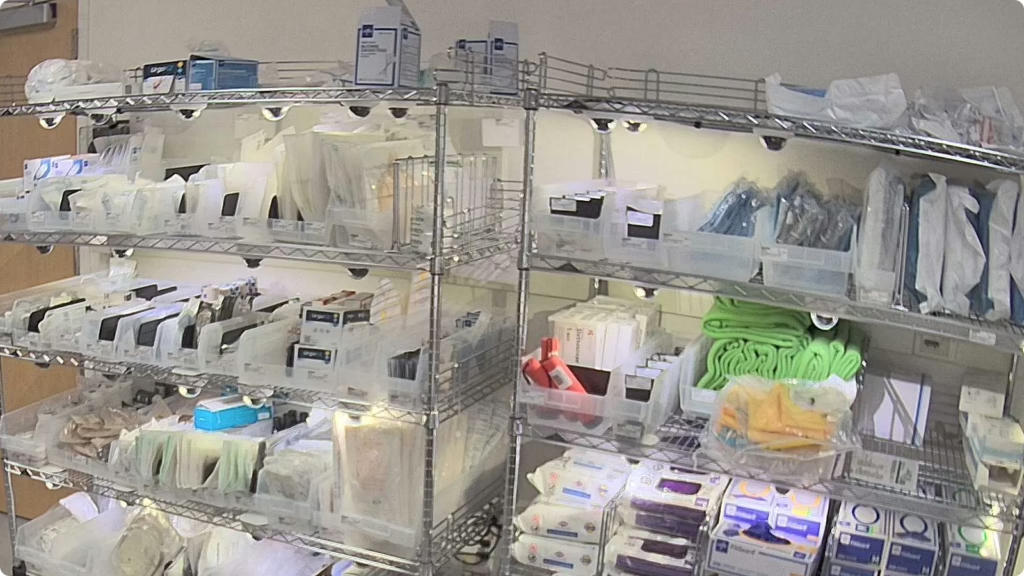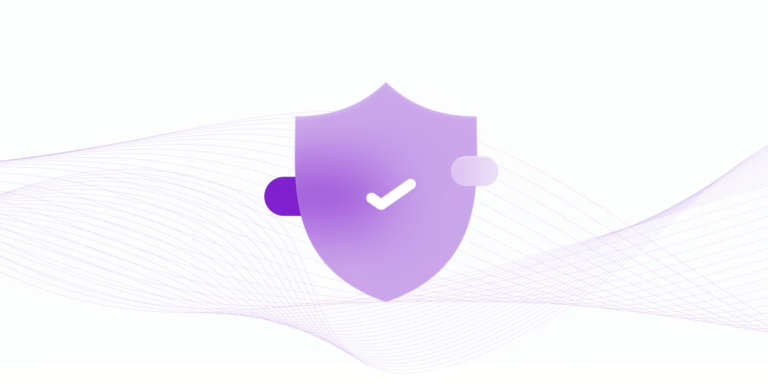A single missing item can delay care and raise costs. Barcode scans, RFID, and PAR-level counts capture inventory at specific moments. Between those checks, items are used, misplaced, or forgotten, and shortages are discovered too late. Preventing stockouts is not just a logistics issue. It affects care delivery, staff efficiency, and financial performance.
AI-driven systems give hospitals continuous visibility into how supplies move, deplete, and replenish. Instead of relying on static counts, these systems monitor shelves in real time, forecast demand, and trigger reorders automatically. The result is a supply chain that sees risk early and acts before disruption.
The next five capabilities show how data and automation turn supply management from reactive to proactive and prevent shortages.
1. Real-time shelf visibility with AI cameras
Real-time shelf visibility is one of the most effective stockout prevention strategies hospitals can use. Staff may think a shelf is stocked until the next check shows otherwise. AI cameras close that gap by capturing shelf images in real time, tracking bin fullness, and detecting changes automatically. This continuous view replaces periodic counts.
The gap between when supplies are used and when counts update is where shortages begin. Staff may think a shelf is stocked until the next check shows otherwise. AI-enabled smart cameras close that gap by capturing shelf images in real time, tracking bin fullness, and detecting changes automatically. This continuous view replaces periodic counts.
Dashboards show which bins are full, low, or empty, with drill downs into each storeroom supported by live images from AI-powered healthcare inventory management systems. Image metadata only is processed. Face masking and blurring protect staff privacy while maintaining precise tracking.
AI cameras are the digital eyes of the supply room. They keep every shelf visible and make sure products are there when needed.
Demand for real-time insight is growing. Smaller supply teams, a broader mix of medical-surgical and clinical supplies, and more frequent supplier delays make manual checks unsustainable. AI-powered visibility gives hospitals a verified picture of stock levels and the control needed to prevent shortages before they happen.
2. Predictive analytics with demand forecasting
Traditional inventory systems record what was ordered and received, not how fast supplies are being used. That lag forces hospitals to react to shortages instead of preventing them.
AI adds continuous awareness. It monitors usage across department storerooms and time, spotting trends that signal rising demand or slower replenishment. When usage increases or deliveries fall behind, reorder thresholds adjust automatically. Forecasting becomes dynamic and reflects current conditions, not static averages.
This visibility helps purchasing plan ahead. Orders align with actual demand, which reduces last-minute requests and emergency shipments. Predictive analytics is now a core part of advanced inventory methods. As supply chains fluctuate and budgets tighten, AI forecasting helps hospitals balance stock levels, reduce waste, and keep essential supplies on hand.

3. Automated reordering signals and ERP integration
In many hospitals, replenishment still starts when someone notices a half-empty bin. PAR levels define when to reorder, but staff must log requests and submit them manually. Those steps take time, and delays lead to preventable shortages.
AI removes that lag. Smart cameras track consumption continuously and learn how quickly each item is used. When stock drops below a set threshold, the system sends a reorder signal directly to the ERP or purchasing platform. Orders generate automatically and are reviewed as part of normal workflow. Reliable automation depends on transparency and control within AI supply chain systems. Every reorder should be traceable and compliant from the moment it is triggered to when it is fulfilled.
Over time, hospitals gain clear insight into usage patterns. Teams see which supplies move fastest, which sit idle, and which often hit critical levels before anyone notices. These insights refine reorder thresholds and help departments maintain steady inventory.
AHRMM highlights automation as critical to sustaining performance under pressure. With smaller teams, more variation in clinical supplies, and unpredictable lead times, manual processes cannot keep pace. Automated reordering keeps ordering consistent and accurate even as conditions change.

4. Exception alerts and anomaly detection
Barcode scans and periodic counts show only a moment in time. Between those checks, supplies can disappear. Someone might take the last item without logging it, or a product might be misplaced or swapped for a substitute when another item runs out. As backorders and substitutions increase, these small errors are easier to miss and harder to track.
Real-time exception alerts replace delayed manual reviews with immediate visibility. Smart cameras monitor continuously and send alerts when a bin empties faster than expected or an item is stored in the wrong location. Staff can correct issues early before they cause a shortage. Hospitals that recognize early warning signs of supply chain risk can act before small discrepancies become major shortages.
Timing is the advantage. As supplier schedules stay unpredictable and supply variation grows, these alerts give hospitals the insight needed to prevent stockouts rather than react to them.
5. Inventory Control Tower as the oversight hub
Many hospitals still track supplies through a mix of spreadsheets, ERP modules, and departmental logs. That fragmented approach slows decisions and makes it hard to pinpoint where problems start.
A central reporting hub unifies the view. It merges real-time data from vision systems, demand signals, reorder events, and alerts into one platform. Teams can see which SKUs are running low, which departments are consuming more than expected, and where delays are developing.
Centralized reporting also builds accountability. Patterns such as recurring low-stock items or frequent emergency orders become visible across the network and prompt faster fixes.
As hospital supply chains rely more on connected automation, integration integrity is becoming just as important as visibility. Secure AI systems validate every connection, data exchange, and reorder signal before execution. This level of verification doesn’t just protect systems. It strengthens everyday operations. Staff can trust the data they see, procurement can act on accurate signals, and leaders can make faster, evidence-based decisions. The result is a supply chain that runs smoothly from the storeroom to the point of care.
What changes on Day 1
Clinician at a 13,000-bed West Coast Integrated Healthcare Delivery Network
1. Visibility improves. Real-time shelf monitoring replaces manual counts, and replenishment signals are triggered earlier.
2. Clinician time returns to care. Staff no longer scan or chase supplies. Tracking is touchless and automatic.
3. Purchasing sees signals, not surprises. Reorder events hit the ERP as they occur, giving procurement a live picture of demand.
4. Trust grows through verification. Every supply level is backed by visual confirmation, not assumption.
Smart automation means never running out of supplies again
Hospitals are working with smaller teams and tighter delivery schedules, which makes it harder to keep track of supplies. AI-powered automation fills the gaps left by manual checks. These advanced inventory methods reduce workload, eliminate manual counting, and help hospitals stay prepared for every patient.
Through continuous monitoring and automated reorder signals, staff can trust that critical items will be available when needed. Automation isn’t about replacing people. It gives time back to focus on patient care while routine inventory tasks run automatically in the background.
Ready to stop stockouts before they happen?
Schedule a consultation to learn how real-time visibility, touchless inventory management, and workflow automation can help your organization maintain consistent, reliable supply availability.




